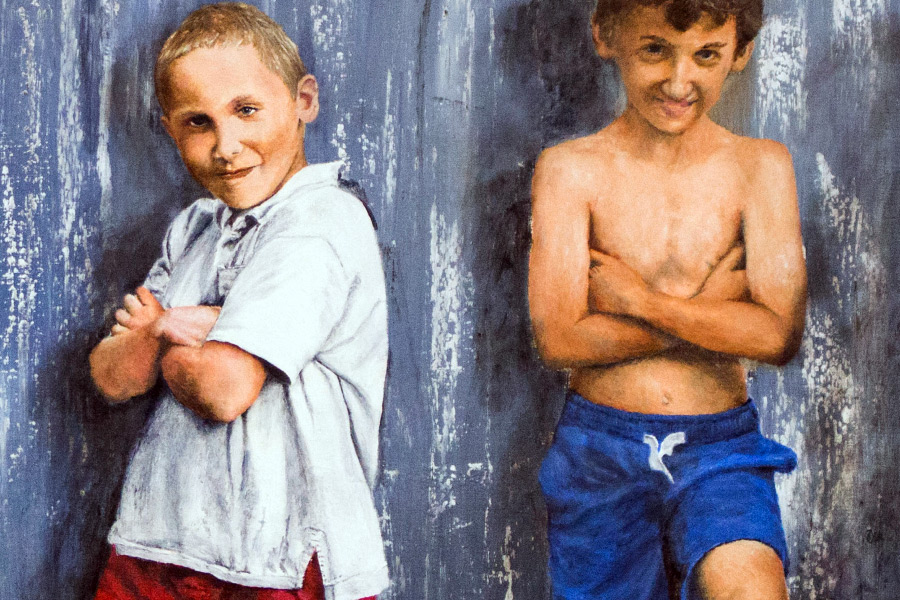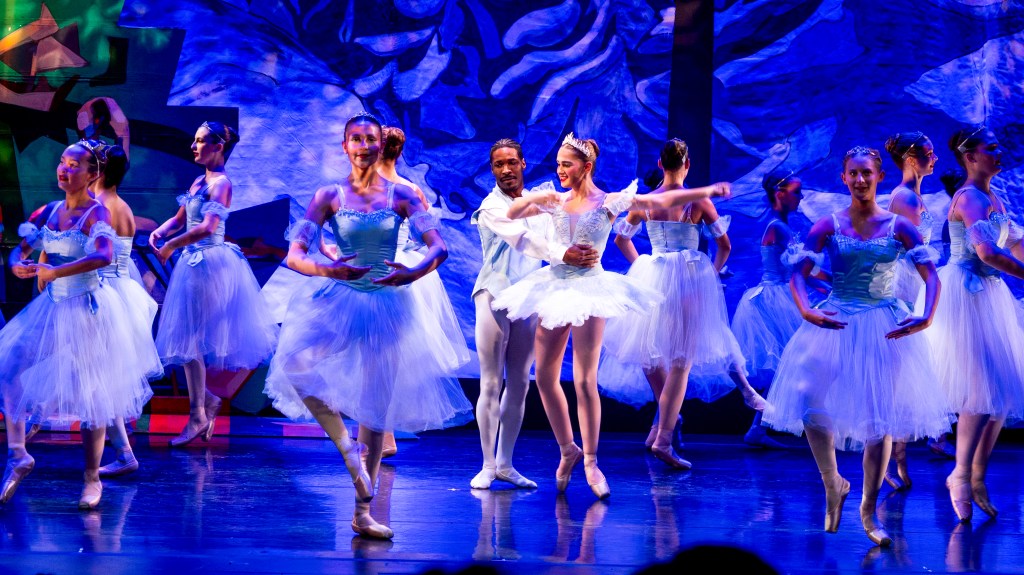A Talk with Dan's Papers Cover Artist Richard Mothes

Staring down the viewer, a wee bit defiant, slightly bemused, the two boys pictured on this week’s cover seem like typical kids hanging out on a summer’s day. But Richard Mothes’s oil-on-canvas scene has been cropped, and when the two boys are seen in context (see picture below) they seem likely to have been the more compliant of the group, given the expressions and stances of the other boys.
But they all posed in one way or another—these are Mothes’s sister’s kids and their friends. Mothes notes with affection and appreciation that the two cover kids seem up for center stage, carefree and content in their boldly-colored swimsuits. Significantly, though, in the full picture, the graffito “Bonacker” is painted on the worn fence behind them. It’s the name of the painting, and it identifies the boys as South Fork locals, not the children of well-off Hamptonites. The cover takes on the look of a Norman Rockwell-like illustration, a slice of Americana, and is more in line with work Mothes has been doing in the last few years since he gave up his day job.

You took up drawing and painting at Southampton College, following your initial degree from Clarkson University in Mechanical Engineering and 22 years in the tennis business, managing East Hampton Indoor Tennis. Are your various worlds connected?
Not really, except that when I first took drawing and printmaking classes at Southampton, I had a “nice taste” of another kind of life, and, with the support of my wife, was able to pursue it. In engineering, there’s right and wrong or the building will fail. In art, it’s a matter of feeling, perspective, and I like that.
How do you prepare for painting?
I use Photoshop, do a lot of editing and then use water-based oil, no toxic turpentine. I also talk with artists such as Eric Fischl who has been encouraging me to do what I want, which is realism, and avoid trendy abstraction.
You note that East Hampton is very important to you. In what way?
I grew up here and I know the locals, especially the kids, children of people who work in the service industry. I want to show these kids as they are, playing soccer, riding bikes, hiking, going crabbing. They see privileged kids who have everything, and that’s kind of hard.
You also work at times symbolically, as in “Judge and Jury,” an oil canvas of sky and clouds, urban skyline against a huge background wave and a tiger slinking across the foreground. What connects these approaches?
Not much, but I can say that the Wall Street work was inspired by Caravaggio’s lights and darks that I fell in love with on a couple of trips to Italy. As for the tiger painting, okay, I was trying to be philosophical, and I probably won’t go there again. I’m learning, with the support of the Mayson Gallery and Fischl, trying out various styles and techniques. I like to work in series and will do the boys again. I’m also starting a series on the guys in The Tangiers Blues Band. They’re from the city but they play at the Talkhouse.
See Mothes’ work at Ashawagh Hall on May 16 and 17 in “Hamptons Project,” and at the White Room Gallery, 2415 Main Street, Bridgehampton throughout the summer. richardmothes.com.










